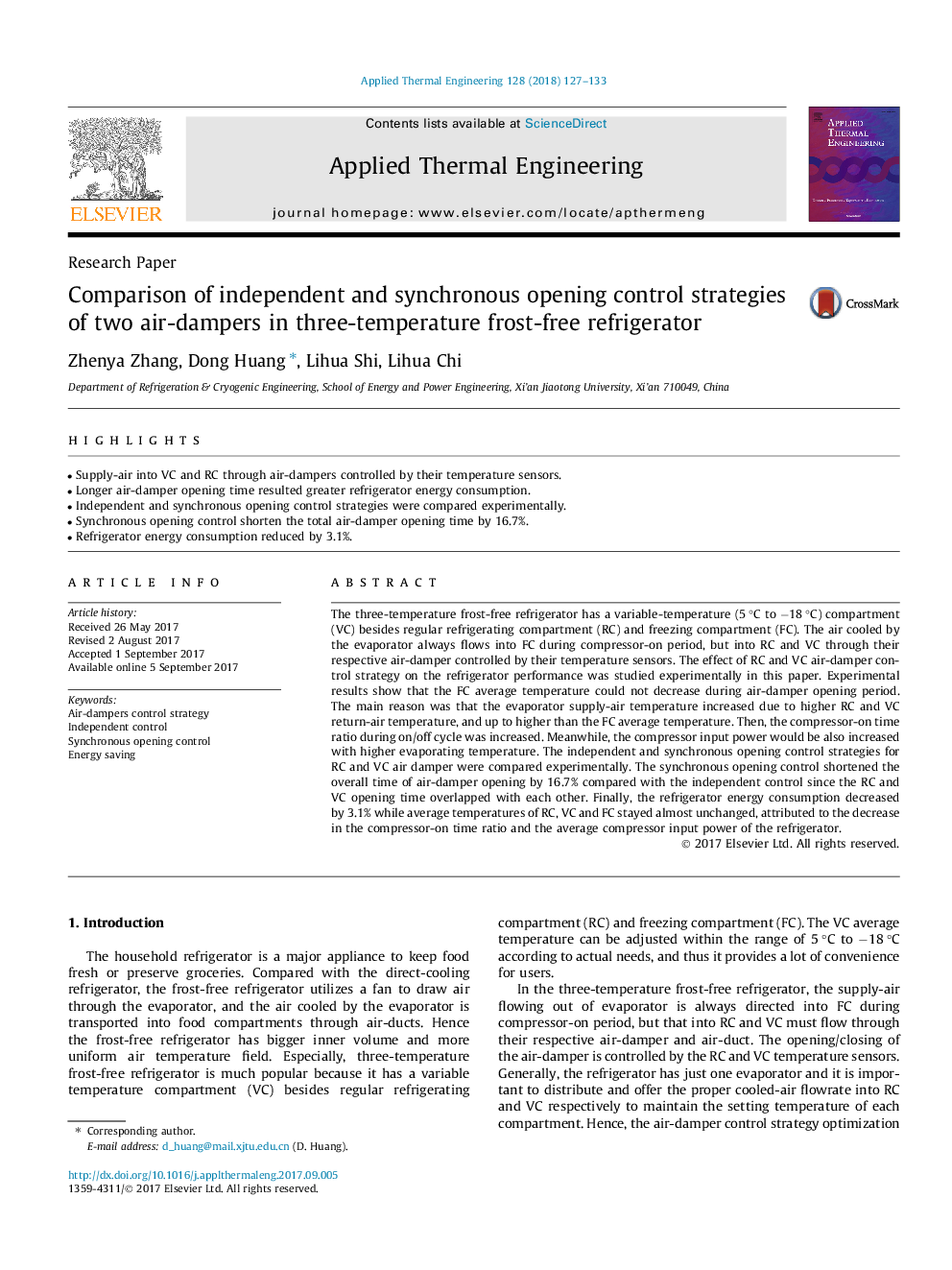| کد مقاله | کد نشریه | سال انتشار | مقاله انگلیسی | نسخه تمام متن |
|---|---|---|---|---|
| 4990804 | 1457101 | 2018 | 7 صفحه PDF | دانلود رایگان |
- Supply-air into VC and RC through air-dampers controlled by their temperature sensors.
- Longer air-damper opening time resulted greater refrigerator energy consumption.
- Independent and synchronous opening control strategies were compared experimentally.
- Synchronous opening control shorten the total air-damper opening time by 16.7%.
- Refrigerator energy consumption reduced by 3.1%.
The three-temperature frost-free refrigerator has a variable-temperature (5 °C to â18 °C) compartment (VC) besides regular refrigerating compartment (RC) and freezing compartment (FC). The air cooled by the evaporator always flows into FC during compressor-on period, but into RC and VC through their respective air-damper controlled by their temperature sensors. The effect of RC and VC air-damper control strategy on the refrigerator performance was studied experimentally in this paper. Experimental results show that the FC average temperature could not decrease during air-damper opening period. The main reason was that the evaporator supply-air temperature increased due to higher RC and VC return-air temperature, and up to higher than the FC average temperature. Then, the compressor-on time ratio during on/off cycle was increased. Meanwhile, the compressor input power would be also increased with higher evaporating temperature. The independent and synchronous opening control strategies for RC and VC air damper were compared experimentally. The synchronous opening control shortened the overall time of air-damper opening by 16.7% compared with the independent control since the RC and VC opening time overlapped with each other. Finally, the refrigerator energy consumption decreased by 3.1% while average temperatures of RC, VC and FC stayed almost unchanged, attributed to the decrease in the compressor-on time ratio and the average compressor input power of the refrigerator.
Journal: Applied Thermal Engineering - Volume 128, 5 January 2018, Pages 127-133
